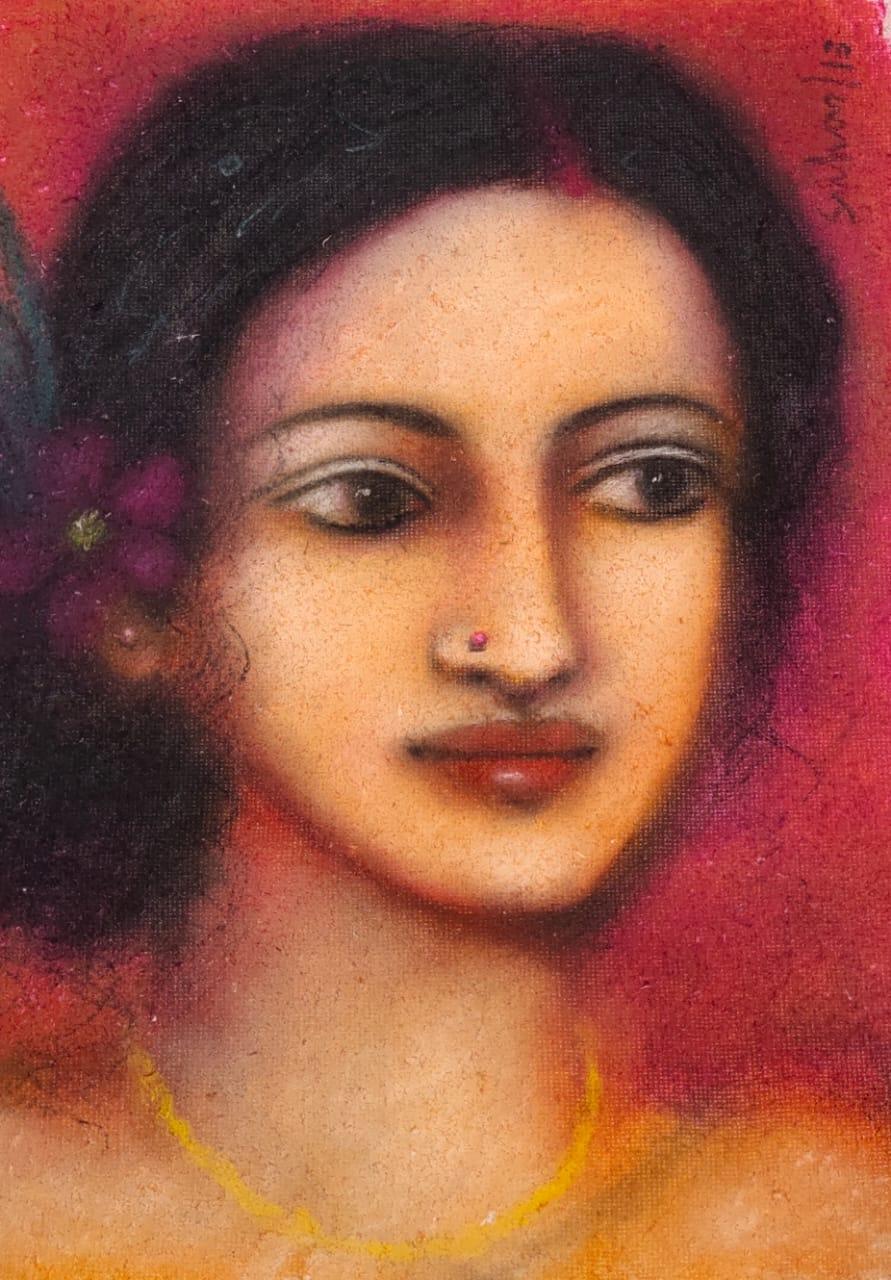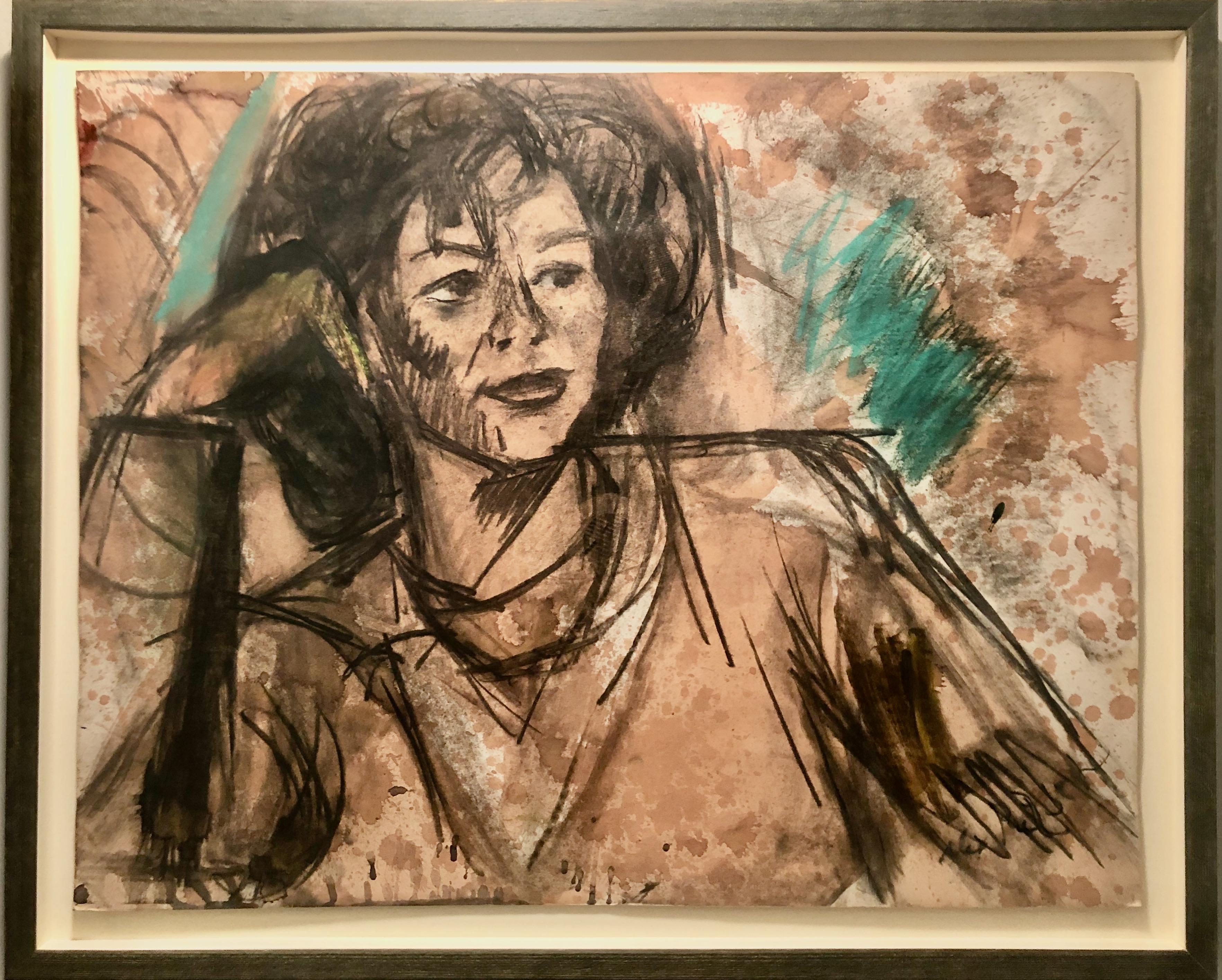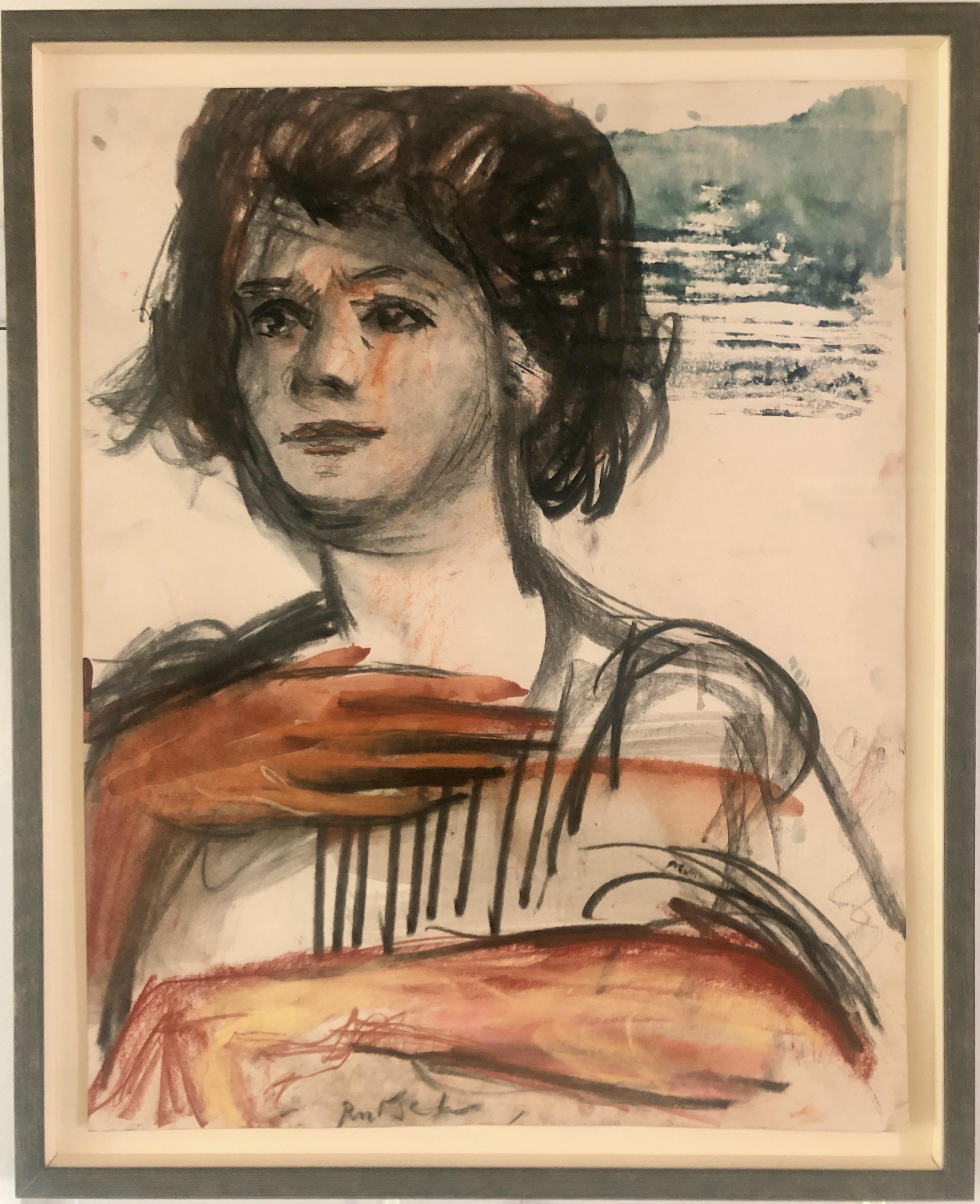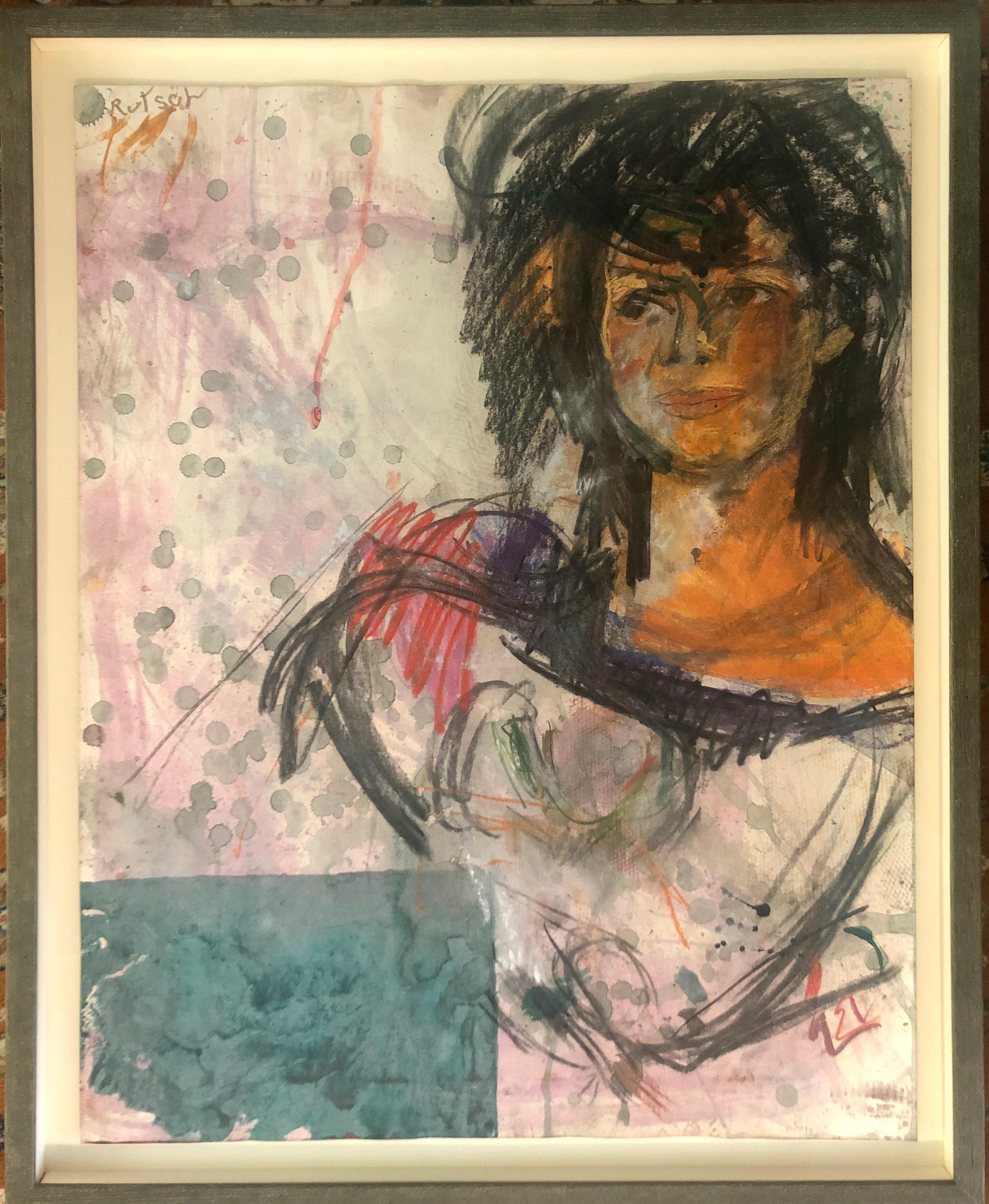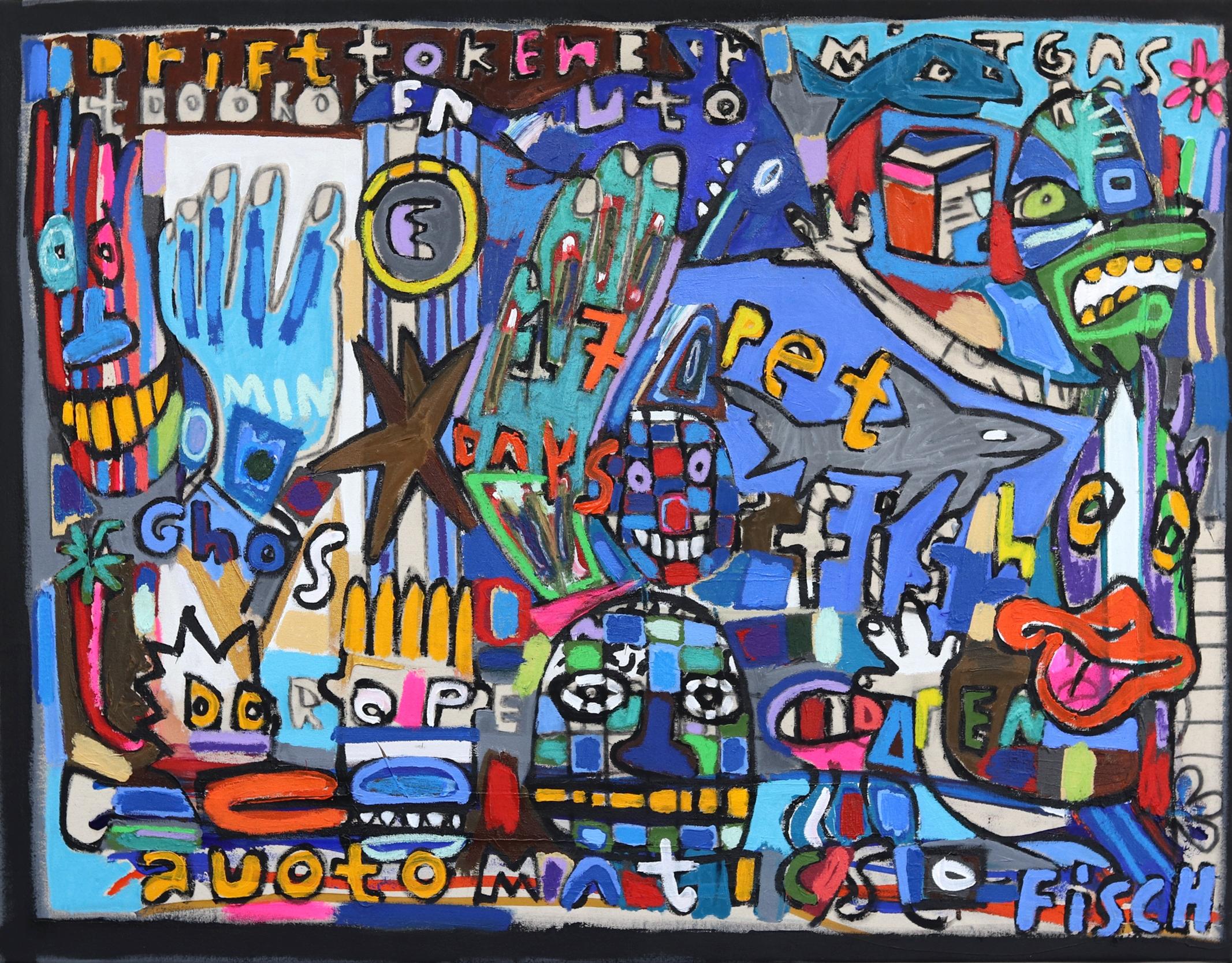Items Similar to Deposition of Christ - Mixed Media on Paper - 20th Century
Want more images or videos?
Request additional images or videos from the seller
1 of 3
UnknownDeposition of Christ - Mixed Media on Paper - 20th Century20th Century
20th Century
About the Item
Crucifixion is a modern drawing in mixed media on paper realized by an anonymous artist of the 20 Century.
Very good conditions, with a drawing on the rear.
The artwork represents the scenery of suffering and moaning in crucification, through gloomy and dark colors, depicted by strong faithful expression in a harmonious manner, The artist's efforts indicate the perfect applying of aesthetic features.
- Creation Year:20th Century
- Dimensions:Height: 9.45 in (24 cm)Width: 11.82 in (30 cm)Depth: 0.04 in (1 mm)
- Medium:
- Movement & Style:
- Period:
- Framing:Framing Options Available
- Condition:Insurance may be requested by customers as additional service, contact us for more information.
- Gallery Location:Roma, IT
- Reference Number:
About the Seller
4.9
Platinum Seller
These expertly vetted sellers are 1stDibs' most experienced sellers and are rated highest by our customers.
1stDibs seller since 2017
6,746 sales on 1stDibs
Typical response time: 2 hours
- ShippingRetrieving quote...Ships From: Monaco, Monaco
- Return PolicyA return for this item may be initiated within 14 days of delivery.
More From This SellerView All
- Reclined Nude - Drawing by Leo Guida - 1970sBy Leo GuidaLocated in Roma, ITReclined Nude is an original Charcoal, oil pastel and watercolor drawing realized by Leo Guida in the 1970s. Good condition except for some foxing. The artwork is depicted through ...Category
1970s Contemporary Nude Drawings and Watercolors
MaterialsCharcoal, Oil Pastel, Watercolor
- Landscape - Mixed Media on Cardboard by Sun Jingyuan - 1970Located in Roma, ITLandscape is an original drawing artwork in mixed media on cardboard, oil pastel and charcoal, realized by Sun Jingyuan in 1970. The state of preservation is very good. Sheet dimens...Category
1970s Figurative Drawings and Watercolors
MaterialsCharcoal, Oil Pastel, Mixed Media, Cardboard
- Composition - Mixed Media on Cardboard by Sun Jingyuan - 1970sLocated in Roma, ITComposition is a drawing in mixed media on cardboard, realized by Sun Jingyuan in 1970s. The state of preservation is very good. Sheet dimension: 54.5 x ...Category
1970s Figurative Drawings and Watercolors
MaterialsMixed Media, Cardboard, Charcoal, Oil Pastel
- Landscape - Mixed Media on Cardboard by Sun Jingyuan - 1970Located in Roma, ITLandscape is an original drawing artwork in mixed media, charcoal and oil pastel, on cardboard, realized by Sun Jingyuan in 1970s. The state of preservati...Category
1970s Figurative Drawings and Watercolors
MaterialsCharcoal, Oil Pastel, Mixed Media, Cardboard
- Landscape - Mixed Media on Cardboard by Sun Jingyuan - 1970sLocated in Roma, ITLandscape is a drawing in mixed media, charcoal and oil pastel on cardboard, realized by Sun Jingyuan in 1970s. The state of preservation is very good. S...Category
1970s Figurative Drawings and Watercolors
MaterialsMixed Media, Cardboard, Charcoal, Oil Pastel
- Landscape - Mixed Media on Cardboard by Sun Jingyuan - 1970sLocated in Roma, ITLandscape is an original drawing artwork in mixed media on cardboard, realized by Sun Jingyuan in 1970s. The state of preservation is very good. Sheet di...Category
1970s Figurative Drawings and Watercolors
MaterialsMixed Media, Cardboard, Charcoal, Oil Pastel
You May Also Like
- Radha, Figurative, Mixed Media on Paper by Modern Artist Suhas Roy "In Stock"By Suhas RoyLocated in Kolkata, West BengalSuhas Roy - Radha Mixed Media on Paper , 12 x 16 inches , 2013 Framed to be 23 x 27 inches Shipment cost estimates : Unframed shipment : 150 USD Cost of Framed shipment to USA e...Category
2010s Modern Figurative Paintings
MaterialsPaper, Mixed Media, Charcoal, Oil Pastel, Pastel
- Portrait Of A Young Model Work On PaperBy Alexander RutschLocated in Delray Beach, FLPortrait Of A Young Model Work On Paper Rutsch is always "scribbling and scrabbling." He is an artist of the purest breed—an artist who has no choice but to paint. He is a chosen traveler of the depths of existence; a man who follows a longing to explore his inner self and relate his findings with the energy and identity of the universe. The celebrated Austrian artist approaches painting and sculpture as he lives life—with the eyes of a child and the hand of a poet. Constantly in the quest for rhythms of form and vibrations of color, he catches those "sparks in the shadow" and evidences their fullest reality and beauty in his creations. Each of his paintings is a careful construction as it is a spontaneous act of love. While he might attribute certain artistic expressions to "coincidence," his inspiration comes from such diverse sources as: memories, dreams, sounds, numbers, telephone poles and drift wood. Rutsch has an affinity to vibrant colors, strong contours and rich brush strokes which are apparent in his oils, mixed media works and ink drawings. He has a sensitivity to the unusual, the discarded and a fondness for the ugly as well as the chaotic. These, he often transforms into poignant welded steel abstractions. Rutsch has an aversion to politics, citing dates and expounding upon honors achieved. There is no talk about 'profound symbolism' in his work and as Carlo McCormick writes in the introduction to Rutsch's monograph, "Meaning is not a seed that Rutsch plants, nurtures and then harvests. It is what grows wild in a volcanic swamp of fossilized, decaying and new-born fancies—as an afterthought and aftershock." Alexander Rutsch is not concerned with interpretations; he is, however, passionate about the process of making art and surrenders his entire being as an instrument to the act of creation. The geometry of his imagination overflows with figures, profiles and penetrating strong eyes—windows to a deeper place. Their vitality and sensuality pulsate through the "dreamscapes" of Rutsch's created worlds. At times romantic, yet always wild with energy, human forms and experiences are essential to the artist's vocabulary. The son of opera singers and a singer himself, Rutsch speaks of "the art of painting as the art of silence" and the job of the painter "to dedicate himself to the silence." He adds though, "that this silence is the greatest existing sound in the universe." One wonders why then, if painting is "the art of silence," that Rutsch's paintings scream with sound. Sometimes melancholy, sometimes sensual, sometimes dissonant and sometimes whispering, the rhythms are always rich in the celebration of life and our shared humanity. Painter, sculptor and poet, Rutsch's oeuvre over the past four decades is tremendous. Celebrated and collected especially in Vienna, Paris, Brussels and New York, he studied with renowned teachers like Boeckl and Dorowsky and collaborated with such geniuses as Salvador Dali. Having left Vienna in the fifties, Rutsch moved to Paris and took the city's art scene by storm. There, Picasso was so enthralled with a portrait Rutsch has done of him that, in a state of great excitement, he countersigned it. Biography Alexander Rutsch was born in Russia in 1916 but raised in Belgrade, Yugoslavia. After studying voice in Austria he became an opera singer like his parents, but after WWII, Rutsch's love for visual expression propelled him to change careers. He was a painter, sculptor, philosopher, musician, singer and poet. His life as a romantic is reflected in his work, as he sought to perfect his soul and humanity, "I paint my dreams," said Rutsch. "My dreams are color and life. They soar in my head like millions of symphonies. I can never stop building dreams." In 1952, after studying under Josef Dobrowsky, Josef Hoffmann and Herbert Boeckl at the Vienna Academy of Fine Arts, Alexander Rutsch received a scholarship to study in France. There he made contacts and began collaborations with his contemporaries, Picasso and Dali. Rutsch said of his experiences with Picasso, "Picasso played a short but important moment in my life in Paris that affected my entire artistic future. I learned from him that it is not important if art is not aesthetically finished. It can be raw, uncooked, rough. If an artist feels he has said it—it is not important to polish or finish it. Because of Picasso, I learned that if I don't feel the need to finish—I don't have to." In 1954 he exhibited his work at the Salon Artistique International de Saceux and won first prize for abstract painting, the first of may awards received during his prolific career. During the 13 years he lived in Paris, Rutsch exhibited in many prominent galleries there and throughout Europe. In 1958, The City of Paris awarded him the prestigious Arts, Science and Letters Silver Medal. In 1966, Jean Desvilles presented his prize winning film "Le Monde de Rutsch" at the Cannes Film Festival and the Venice Biennial. In 1968 Rutsch moved to Pelham, New York where he continued to work in his studio and exhibit in galleries and museums worldwide. Rutsch's work, as seen through his mastery of many art forms—sculpture, painting, print-making, and drawing, and a wide variety of other media has been described as "vibrating showers of lines, bold geometries, wounded anatomically rambling scrap-wood skeletons...Category
1980s Expressionist Mixed Media
MaterialsWatercolor, Charcoal, Oil Pastel
- Young Model Portrait Mixed Media On PaperBy Alexander RutschLocated in Delray Beach, FLYoung Model Expressionist Portrait Rutsch is always "scribbling and scrabbling." He is an artist of the purest breed—an artist who has no choice but to paint. He is a chosen traveler of the depths of existence; a man who follows a longing to explore his inner self and relate his findings with the energy and identity of the universe. The celebrated Austrian artist approaches painting and sculpture as he lives life—with the eyes of a child and the hand of a poet. Constantly in the quest for rhythms of form and vibrations of color, he catches those "sparks in the shadow" and evidences their fullest reality and beauty in his creations. Each of his paintings is a careful construction as it is a spontaneous act of love. While he might attribute certain artistic expressions to "coincidence," his inspiration comes from such diverse sources as: memories, dreams, sounds, numbers, telephone poles and drift wood. Rutsch has an affinity to vibrant colors, strong contours and rich brush strokes which are apparent in his oils, mixed media works and ink drawings. He has a sensitivity to the unusual, the discarded and a fondness for the ugly as well as the chaotic. These, he often transforms into poignant welded steel abstractions. Rutsch has an aversion to politics, citing dates and expounding upon honors achieved. There is no talk about 'profound symbolism' in his work and as Carlo McCormick writes in the introduction to Rutsch's monograph, "Meaning is not a seed that Rutsch plants, nurtures and then harvests. It is what grows wild in a volcanic swamp of fossilized, decaying and new-born fancies—as an afterthought and aftershock." Alexander Rutsch is not concerned with interpretations; he is, however, passionate about the process of making art and surrenders his entire being as an instrument to the act of creation. The geometry of his imagination overflows with figures, profiles and penetrating strong eyes—windows to a deeper place. Their vitality and sensuality pulsate through the "dreamscapes" of Rutsch's created worlds. At times romantic, yet always wild with energy, human forms and experiences are essential to the artist's vocabulary. The son of opera singers and a singer himself, Rutsch speaks of "the art of painting as the art of silence" and the job of the painter "to dedicate himself to the silence." He adds though, "that this silence is the greatest existing sound in the universe." One wonders why then, if painting is "the art of silence," that Rutsch's paintings scream with sound. Sometimes melancholy, sometimes sensual, sometimes dissonant and sometimes whispering, the rhythms are always rich in the celebration of life and our shared humanity. Painter, sculptor and poet, Rutsch's oeuvre over the past four decades is tremendous. Celebrated and collected especially in Vienna, Paris, Brussels and New York, he studied with renowned teachers like Boeckl and Dorowsky and collaborated with such geniuses as Salvador Dali. Having left Vienna in the fifties, Rutsch moved to Paris and took the city's art scene by storm. There, Picasso was so enthralled with a portrait Rutsch has done of him that, in a state of great excitement, he countersigned it. Biography Alexander Rutsch was born in Russia in 1916 but raised in Belgrade, Yugoslavia. After studying voice in Austria he became an opera singer like his parents, but after WWII, Rutsch's love for visual expression propelled him to change careers. He was a painter, sculptor, philosopher, musician, singer and poet. His life as a romantic is reflected in his work, as he sought to perfect his soul and humanity, "I paint my dreams," said Rutsch. "My dreams are color and life. They soar in my head like millions of symphonies. I can never stop building dreams." In 1952, after studying under Josef Dobrowsky, Josef Hoffmann and Herbert Boeckl at the Vienna Academy of Fine Arts, Alexander Rutsch received a scholarship to study in France. There he made contacts and began collaborations with his contemporaries, Picasso and Dali. Rutsch said of his experiences with Picasso, "Picasso played a short but important moment in my life in Paris that affected my entire artistic future. I learned from him that it is not important if art is not aesthetically finished. It can be raw, uncooked, rough. If an artist feels he has said it—it is not important to polish or finish it. Because of Picasso, I learned that if I don't feel the need to finish—I don't have to." In 1954 he exhibited his work at the Salon Artistique International de Saceux and won first prize for abstract painting, the first of may awards received during his prolific career. During the 13 years he lived in Paris, Rutsch exhibited in many prominent galleries there and throughout Europe. In 1958, The City of Paris awarded him the prestigious Arts, Science and Letters Silver Medal. In 1966, Jean Desvilles presented his prize winning film "Le Monde de Rutsch" at the Cannes Film Festival and the Venice Biennial. In 1968 Rutsch moved to Pelham, New York where he continued to work in his studio and exhibit in galleries and museums worldwide. Rutsch's work, as seen through his mastery of many art forms—sculpture, painting, print-making, and drawing, and a wide variety of other media has been described as "vibrating showers of lines, bold geometries, wounded anatomically rambling scrap-wood skeletons...Category
1980s Expressionist Mixed Media
MaterialsCharcoal, Oil Pastel, Watercolor
- Portrait of A Young Model Work On PaperBy Alexander RutschLocated in Delray Beach, FLYoung Model II Expressionist Portrait Rutsch is always "scribbling and scrabbling." He is an artist of the purest breed—an artist who has no choice but to paint. He is a chosen traveler of the depths of existence; a man who follows a longing to explore his inner self and relate his findings with the energy and identity of the universe. The celebrated Austrian artist approaches painting and sculpture as he lives life—with the eyes of a child and the hand of a poet. Constantly in the quest for rhythms of form and vibrations of color, he catches those "sparks in the shadow" and evidences their fullest reality and beauty in his creations. Each of his paintings is a careful construction as it is a spontaneous act of love. While he might attribute certain artistic expressions to "coincidence," his inspiration comes from such diverse sources as: memories, dreams, sounds, numbers, telephone poles and drift wood. Rutsch has an affinity to vibrant colors, strong contours and rich brush strokes which are apparent in his oils, mixed media works and ink drawings. He has a sensitivity to the unusual, the discarded and a fondness for the ugly as well as the chaotic. These, he often transforms into poignant welded steel abstractions. Rutsch has an aversion to politics, citing dates and expounding upon honors achieved. There is no talk about 'profound symbolism' in his work and as Carlo McCormick writes in the introduction to Rutsch's monograph, "Meaning is not a seed that Rutsch plants, nurtures and then harvests. It is what grows wild in a volcanic swamp of fossilized, decaying and new-born fancies—as an afterthought and aftershock." Alexander Rutsch is not concerned with interpretations; he is, however, passionate about the process of making art and surrenders his entire being as an instrument to the act of creation. The geometry of his imagination overflows with figures, profiles and penetrating strong eyes—windows to a deeper place. Their vitality and sensuality pulsate through the "dreamscapes" of Rutsch's created worlds. At times romantic, yet always wild with energy, human forms and experiences are essential to the artist's vocabulary. The son of opera singers and a singer himself, Rutsch speaks of "the art of painting as the art of silence" and the job of the painter "to dedicate himself to the silence." He adds though, "that this silence is the greatest existing sound in the universe." One wonders why then, if painting is "the art of silence," that Rutsch's paintings scream with sound. Sometimes melancholy, sometimes sensual, sometimes dissonant and sometimes whispering, the rhythms are always rich in the celebration of life and our shared humanity. Painter, sculptor and poet, Rutsch's oeuvre over the past four decades is tremendous. Celebrated and collected especially in Vienna, Paris, Brussels and New York, he studied with renowned teachers like Boeckl and Dorowsky and collaborated with such geniuses as Salvador Dali. Having left Vienna in the fifties, Rutsch moved to Paris and took the city's art scene by storm. There, Picasso was so enthralled with a portrait Rutsch has done of him that, in a state of great excitement, he countersigned it. Biography Alexander Rutsch was born in Russia in 1916 but raised in Belgrade, Yugoslavia. After studying voice in Austria he became an opera singer like his parents, but after WWII, Rutsch's love for visual expression propelled him to change careers. He was a painter, sculptor, philosopher, musician, singer and poet. His life as a romantic is reflected in his work, as he sought to perfect his soul and humanity, "I paint my dreams," said Rutsch. "My dreams are color and life. They soar in my head like millions of symphonies. I can never stop building dreams." In 1952, after studying under Josef Dobrowsky, Josef Hoffmann and Herbert Boeckl at the Vienna Academy of Fine Arts, Alexander Rutsch received a scholarship to study in France. There he made contacts and began collaborations with his contemporaries, Picasso and Dali. Rutsch said of his experiences with Picasso, "Picasso played a short but important moment in my life in Paris that affected my entire artistic future. I learned from him that it is not important if art is not aesthetically finished. It can be raw, uncooked, rough. If an artist feels he has said it—it is not important to polish or finish it. Because of Picasso, I learned that if I don't feel the need to finish—I don't have to." In 1954 he exhibited his work at the Salon Artistique International de Saceux and won first prize for abstract painting, the first of may awards received during his prolific career. During the 13 years he lived in Paris, Rutsch exhibited in many prominent galleries there and throughout Europe. In 1958, The City of Paris awarded him the prestigious Arts, Science and Letters Silver Medal. In 1966, Jean Desvilles presented his prize winning film "Le Monde de Rutsch" at the Cannes Film Festival and the Venice Biennial. In 1968 Rutsch moved to Pelham, New York where he continued to work in his studio and exhibit in galleries and museums worldwide. Rutsch's work, as seen through his mastery of many art forms—sculpture, painting, print-making, and drawing, and a wide variety of other media has been described as "vibrating showers of lines, bold geometries, wounded anatomically rambling scrap-wood skeletons...Category
1980s Expressionist Mixed Media
MaterialsCharcoal, Oil Pastel, Watercolor
- A Lot of Things - Red Abstract Expressionist Street Art Original PaintingBy Jonas FischLocated in Los Angeles, CASwedish artist Jonas Fisch’s imagery is vibrantly buzzing with colorful commentary on society - past and present - morphed into figures, words, and shapes. His heavily layered canvas...Category
21st Century and Contemporary Street Art Abstract Paintings
MaterialsCanvas, Charcoal, Oil Pastel, Mixed Media, Acrylic
- Ghost FishBy Jonas FischLocated in Los Angeles, CASwedish artist Jonas Fisch’s imagery is vibrantly buzzing with colorful commentary on society - past and present - morphed into figures, words, and shapes. His heavily layered canvas...Category
21st Century and Contemporary Pop Art Abstract Paintings
MaterialsCanvas, Charcoal, Oil Pastel, Mixed Media, Acrylic
Recently Viewed
View AllMore Ways To Browse
Christal Art
Christal Vintage
Christ Oil
Christ Unknown
Modern Christ
Gloomy Art
Vintage Crucifixion
Crucifixion Of Christ
Unknown Drawing Oil And Pastel
Crucified Christ
The Crucifixion Of Christ
Deposition Of Christ
Warren Zevon
Williams Sonoma Sofa
Vesna Vrdoljak
Yaron Dotan On Sale
Vintage Vanna White
Vintage Rolex Los Angeles
